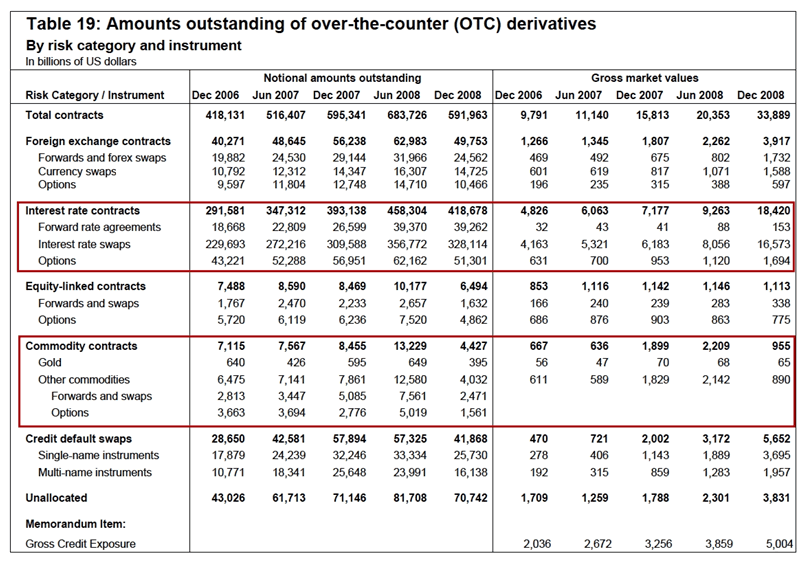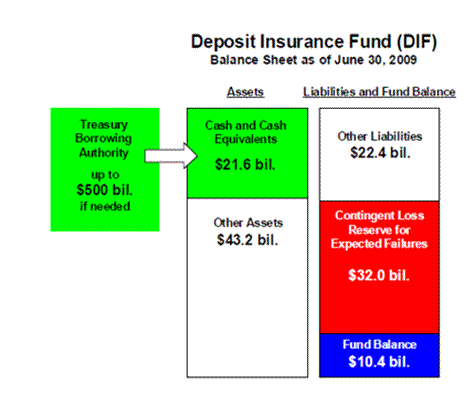Gold, the Opportunity of a Lifetime.. A Year Later
Commodities / Gold & Silver 2009 Sep 04, 2009 - 03:34 PM GMTBy: Andy_Sutton
 Last October was a pretty brutal time to be in the prognostication business. I had just called Gold the opportunity of a lifetime at the end of August at a price of around $800/ounce. By the time late October came around, the price had fallen to around $725 and the catcalls had begun in earnest. The Keynesian Kakistocracy was out in full force, hurling insults so rich and humorous that I felt compelled to write some of them down. Now a year later it is time to do another quick review and probably set myself up for yet another barrage of hate mail if the price of Gold doesn’t immediately set a course for Mars.
Last October was a pretty brutal time to be in the prognostication business. I had just called Gold the opportunity of a lifetime at the end of August at a price of around $800/ounce. By the time late October came around, the price had fallen to around $725 and the catcalls had begun in earnest. The Keynesian Kakistocracy was out in full force, hurling insults so rich and humorous that I felt compelled to write some of them down. Now a year later it is time to do another quick review and probably set myself up for yet another barrage of hate mail if the price of Gold doesn’t immediately set a course for Mars.
Yes, we are one year removed from that column and Gold is up 25% in dollar terms at nearly $1000/ounce. Detractors will quickly point out Gold’s inability to land and stick above the $1000 level. In return, I will point at the Dollar’s failed rally to 90 as measured by the USDX. Detractors will point to a lack of interest and dividends from investing in Gold. I will point out that Gold is not an investment; it is money. However, for those who insist on comparing Gold to stocks, I will point out that in the year since the last article, Gold is up 25% while the Dow Jones Industrials are down 19%. Detractors will point out the new bull market in stocks. I’ll counter with the fact that stocks are merely in the middle of a countertrend rally within a bear market while Gold’s correction last year was a countertrend move within a bull market. Detractors will point to the save-haven status of the Dollar during times of economic distress. I’ll counter with the fact that Congress has ensured that the Dollar will die of nearly two trillion cuts – in FY 2009 alone. Must we really continue this?
So on the anniversary of the beginning of the first in extremis phase of the financial crisis, we’re going to look at two of the many developing situations that should give us pause when considering the stability of our financial structures despite all the positive rhetoric and hopefully compel us to consider how to adequately protect ourselves.
China’s stop-loss
Earlier this week, China released some rather earthshaking news that was barely reported by the diligent media here in the US. And where it was reported, the significance was completely glossed over or even ignored. The Chinese Government gave a directive to its state banks to cut their losses on commodity related derivatives, many of which are tied to NY and London banks. In doing so, the Chinese government is in essence saying it no longer respects the validity of these specific performance contracts, pointing out that without performance, there is nothing special about the contracts.
This is tantamount to a shot across the bow. The commodities portion of the total notional value of all OTC derivatives as of December 2008 is rather small at .75% of the total. Telling Wall Street to take a long walk off a short pier in this instance will probably not destroy the financial system in and of itself, but it will certainly give the bailout boys a hint of what could happen if the Chinese et al (think BRIC) start backing out of other more important areas such as interest rate swaps which were nearly 55% of the total notional value. (Data courtesy of BIS)

Even the most diehard of Keynesians, who have never seen a deficit they didn’t love, are aware of the fact that it is much more favorable to have foreign cooperation in your currency burying than to have to do it on your own with direct (or around the woodpile) monetization. In that regard, they still need the Chinese if for nothing else than maintaining the façade of vendor financing and the maintenance of the status quo.
Stock markets reacted poorly to the news on Tuesday with the DOW losing nearly 200 points on a day where there was a bevy of ‘green shoots’ economic news in the form of ISM manufacturing data, pending home sales, and motor vehicle sales. Financial stocks led the decline and we must wonder if the smart money had its eyes on the Chinese as the day progressed. On Wednesday, Gold broke out of its recent doldrums and immediately headed north. Granted the technical patterns had been predicting the breakout for the past few weeks, but it is rather coincidental and we have to ask if we are not beginning to see the first shockwave from the recent Chinese action? If so, Gold gets a big thumbs up, while paper assets get the boot.
FDIC: The paper tiger is going to need more paper
“We've all seen the good news that has come out on the economy in the past few weeks. While challenges remain, evidence is building that the American economy is starting to grow again. But no matter how challenging the environment ... the FDIC has ample resources to continue protecting insured depositors as we have for the last 75 years. No insured depositor has ever lost a penny of insured deposits ... and no one ever will.”
The above statement, made by FDIC boss Sheila Bair is overflowing with inaccuracies, but for the purposes of this article, I want to focus on the last sentence. The FDIC’s ‘trust fund’ is dry. At the beginning of 2008, the Deposit Insurance Fund (DIF) had a balance of approximately $52.8 Billion. By the end of 2008, the DIF had been drained to around $17.3 Billion on the back of just 25 bank failures. To date in 2009, there have been 81 failures, with the two largest failures of the recession coming in the last month. At the end of Q1 2009, the DIF balance had already been reduced to $13.1 Billion. In addition, the list of ‘troubled’ (read: dead) banks now stands at 416 as of the FDIC’s latest quarterly report.
Ms. Bair, in her statement alluded to the notion that the FDIC sets aside reserves for anticipated failures. The problem is that their estimates of the total impact of failures have been categorically low during the recent run of bank failures. In fact the actual losses have been nearly twice (1.94X) the estimates by FDIC. In the following graphic, used in Ms. Bair’s presentation, the FDIC has estimated the cost of failures to be $32 Billion. If recent history is any guide, the real cost is likely to be a tick over $62 Billion. Given that the balance of the DIF is now at $10.4 Billion, I’d say they have more than a small problem.

What is even more interesting is that Ms. Bair considers money borrowed from the Treasury (taxpayers) and thrown into a black hole to be an asset and her chart above fails to recognize that such a loan creates a liability as well. However, this is indicative of our new accounting paradigm. In addition, she asserts that the FDIC is entirely ‘industry-funded’. Not so when they’re tapping a Treasury credit line. While most folks are sniffing a bailout of FDIC, I wouldn’t count on it. So far, the vast majority of the bailout money has found its way to Wall Street, not Main Street.
So while the FDIC is bragging that no insured depositor has ever lost a penny and never will, it must be noted that it is incorrect to assume that Congress is under any type of mandate to bailout FDIC. When the DIF requires massive borrowing from the Treasury, bank premiums will be increased in a vain attempt cover the cost, which will mean higher borrowing costs for the real economy. And if Congress does step in and bailout FDIC, the amount will just get tacked onto the national debt. So while large banks gobble up smaller ones and consolidate on the back of TARP, TALF, TSLF and a dozen other ‘emergency’ Fed lending programs, everyday Americans will foot the bill in its entirety. How’s that for a guarantee?
The above items are just a sampling of where we stand a year later. The opportunity offered by precious metals is the opportunity rid oneself of counterparty risk. The Dollar is the ultimate example of counterparty risk as it relies on the responsible performance of government and monetary authorities to maintain its value. Since the two aforementioned entities have been absentee custodians of the Dollar for so long, its value has deteriorated dramatically. Precious metals have allowed individuals to compensate for that loss in purchasing power. Pundits will say that Gold is a lousy investment and they’re right. The problem with their thinking is that Gold is not an investment; it is sound money and should be regarded as such, not with contempt as is routinely the case in the mainstream press corps.
So as we begin another September, a time of year that seems to bring out the worst in our financial and banking system, I will say it again – Gold continues to be the opportunity of a lifetime.
We have bundled together the series ‘Basic Financial Analysis’ in PDF format for anyone who would like a copy. Also included in the PDF is an unpublished section on portfolio monitoring. To obtain a copy, please visit: http://www.sutton-associates.net and click the report banner.
By Andy Sutton
http://www.my2centsonline.com
Andy Sutton holds a MBA with Honors in Economics from Moravian College and is a member of Omicron Delta Epsilon International Honor Society in Economics. His firm, Sutton & Associates, LLC currently provides financial planning services to a growing book of clients using a conservative approach aimed at accumulating high quality, income producing assets while providing protection against a falling dollar. For more information visit www.suttonfinance.net
Andy Sutton Archive |
© 2005-2022 http://www.MarketOracle.co.uk - The Market Oracle is a FREE Daily Financial Markets Analysis & Forecasting online publication.



